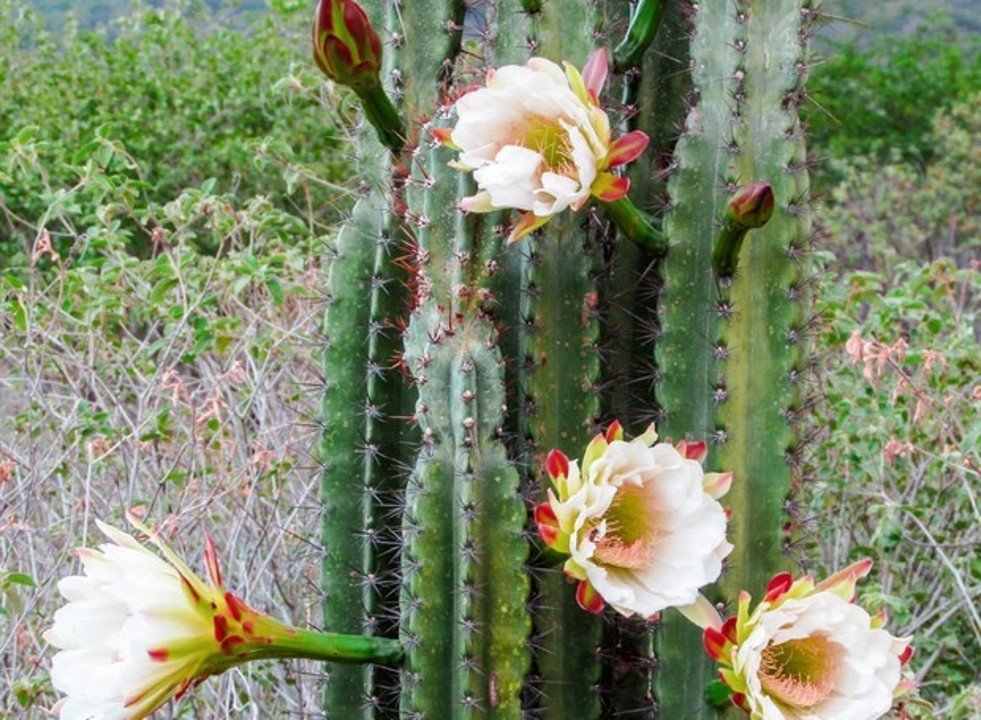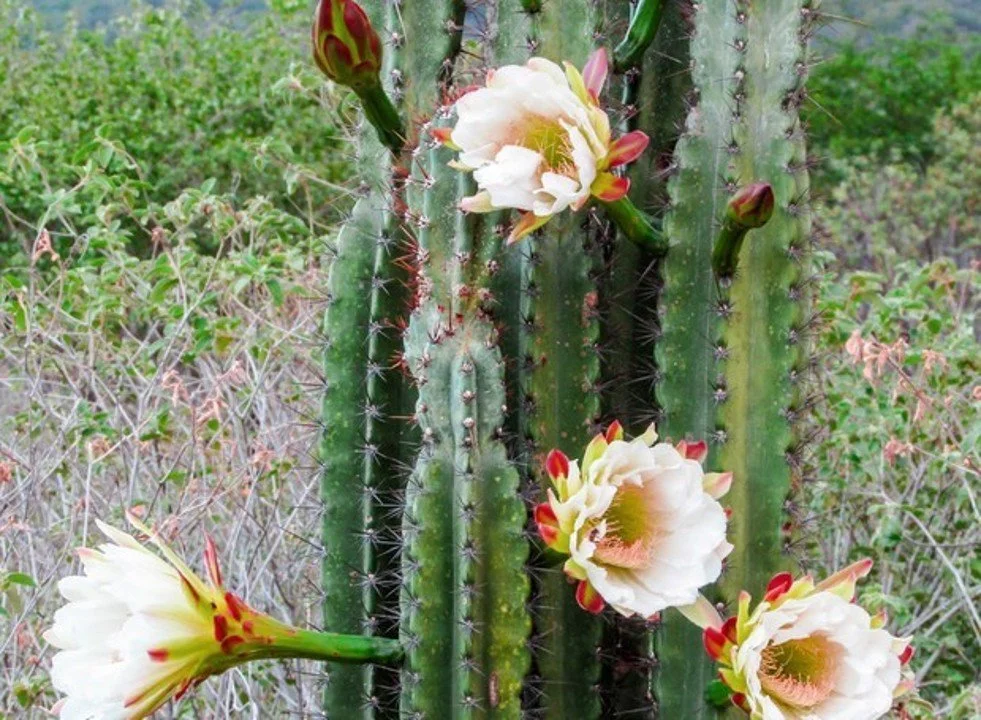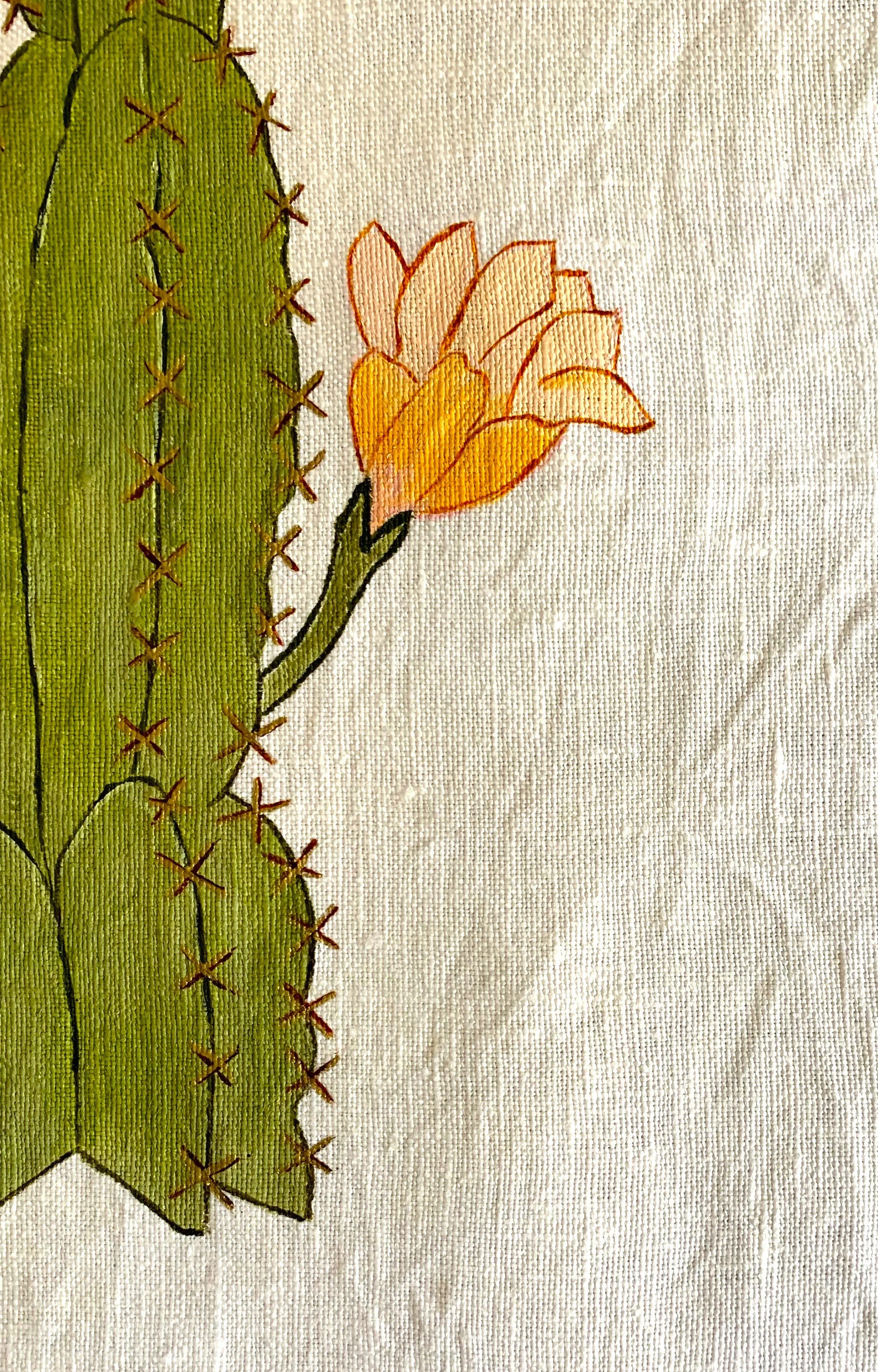
Cereus jamacaru
The Caatinga · Resilience · Protection
In the dry, sun-filled lands of Brazil’s Caatinga, where rain is scarce and every drop matters, stands the Cereus jamacaru — known with deep affection and respect as Mandacaru. Towering and enduring, this cactus is more than a plant. It is a sentinel of survival, a guardian of the dry places.
Botanical Essence
A native giant of the northeastern semi-arid region, Cereus jamacaru thrives where many others perish. Its tall, ribbed columns store precious water. Its white night-blooming flowers offer nectar to animals. And its very presence signals life: wherever the Mandacaru rises, hope endures.
Its roots penetrate deep into rocky soils, and its skin carries the resilience of drought years — a botanical archive of endurance.
Ancestral Wisdom
To the people of the Caatinga — Indigenous, Afro-Brazilian, and sertanejo — Mandacaru is sacred. It is said to protect the home, to guard the threshold, to bless the land with strength and perseverance. In folk rituals, it represents not only survival, but protection — a spiritual shelter amid adversity.
Where this cactus grows, people pause. They remember the ancestors who walked dry paths and lived by listening to the land.
“I guard the dry places — where others fall, I remain.
I carry the memory of protection.”
In an era marked by ecological strain and cultural amnesia, Mandacaru reminds us that strength is not loud — it is rooted, patient, and present. It offers not just biological resilience, but a spiritual architecture of endurance, passed down through generations who have known the wisdom of harsh landscapes.
As part of the Seis Collection, Cereus jamacaru honors the Caatinga’s fierce beauty and its lessons of stillness, survival, and silent blessing.



